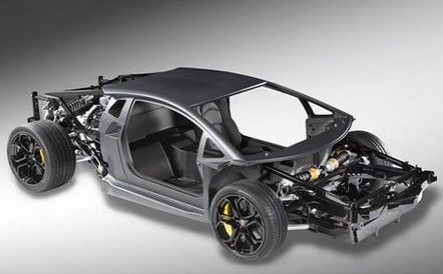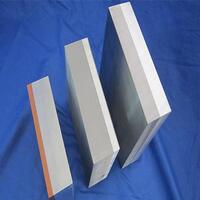1. Introduction
When you hear ‘metal clad,’ your mind might jump to sleek modern homes with corrugated steel facades or high-performance industrial piping wrapped in aluminum clad insulation. But metal clad isn’t just one thing—it’s a whole family of engineered solutions where two or more metals are bonded to combine strength, corrosion resistance, cost-efficiency, or aesthetics.

From metal clad wall panels to pac clad standing seam roofs, this technology bridges form and function across construction, manufacturing, and infrastructure. In this deep dive, we’ll unpack what ‘metal clad’ really means, compare popular types like corten steel siding versus zinc metal siding, and explore how materials like aluminum clad stainless steel stack up against alternatives.
2. What Does ‘Metal Clad’ Mean?
The term ‘metal clad‘ (or ‘metalclad’) refers to a composite material made by bonding a layer of one metal onto another. This process—whether through roll bonding, explosion welding, or electroplating—creates ‘clad metals’ that offer the best of both worlds: the structural integrity of a base metal like carbon steel plus the surface performance of a corrosion-resistant alloy like stainless steel or copper.
In architecture, ‘metal clad‘ often describes exterior finishes—think metal clad siding, metal clad roof systems, or a striking corten steel facade. In engineering, it can mean anything from aluminum clad wire to boiler plate steel with a nickel overlay.
3. Architectural Metal Cladding: Aesthetic Meets Durability
3.1. Popular Facade Materials Compared
Architects love metal cladding for its longevity, low maintenance, and bold visual impact. Let’s compare some top contenders:

- Corten steel siding: Known for its rust-like patina, corten steel requires no painting and develops a protective oxide layer over time. While corten siding cost is higher upfront, its lifespan offsets long-term expenses.
- Zinc facade: Offers a soft gray finish that ages gracefully. Zinc clad dormers and zinc clad roofs are common in European design and gaining traction globally.
- Copper siding: Prized for its warm tone and antimicrobial properties, though expensive and softer than steel or aluminum.
- Aluminum clad sheet: Lightweight and highly corrosion-resistant, often used in vertical standing seam metal siding or pac clad column covers.
3.2. Roofing and Wall Systems
Standing seam systems dominate premium metal roofing. Options like colorbond standing seam or pac clad hwp deliver clean lines and weather-tight performance. For walls, exterior corrugated metal siding remains a favorite for industrial and rustic-modern metal clad houses.
Pac clad coping and pac clad standing seam roof panels are engineered for thermal movement and wind uplift resistance—critical in commercial metal clad buildings.
4. Industrial and Structural Clad Metals
4.1. Clad Steel and Alloy Plates
In heavy industry, ‘clad steel’ often means a carbon steel base (like 1/4 steel plate or 3/16 metal plate) bonded to a stainless or nickel alloy surface. This hybrid approach saves costs while resisting harsh chemicals—common in oil refineries or chemical plants using ASTM A387 pressure vessels.

Examples include stainless clad aluminum for heat exchangers or titanium clad plates for seawater applications. Even specialty alloys like Inconel 625 weld overlay are used to protect mild steel plate from extreme corrosion.
4.2. Electrical and Insulation Applications
Metal clad electrical wire (often called MC cable) features an interlocked armor around insulated conductors. Aluminum clad steel wire or cu clad wire variants offer flexibility and EMI shielding—ideal for commercial buildings in Pennsylvania and beyond.
Meanwhile, aluminum clad pipe insulation wraps ducts and pipes to reflect heat and prevent condensation, commonly seen in HVAC systems.
5. Manufacturing Methods and Material Science
How are these layered metals made? Key techniques include:
- Roll bonding: Hot or cold rolling dissimilar metals under pressure.
- Explosion welding: Uses controlled detonation to fuse metals like stainless steel plate to aluminum plate.
- Electroplating: Deposits thin layers—e.g., chromium electroplating for chrome metal finishes or electroless nickel for uniform coatings on brass plate or diamond plate steel.
Electroplating gold or nickel sulfamate baths serve electronics and aerospace, while zinc nickel alloy plating boosts automotive part durability.
6. Practical Considerations: Cost, Availability, and Selection
Choosing the right metal clad type depends on environment, budget, and function. Corten steel plate may cost more than galvanized steel but eliminates painting needs. Aluminum 6061 T6 plate offers excellent machinability for custom metal nameplates, while 316 stainless steel plate resists saltwater corrosion.
For DIY projects like a metal clad shed, corrugated steel facade panels or aluminum diamond tread plate provide rugged, affordable options. Always check local codes—yes, metal clad wiring can be surface-mounted and used outdoors if rated for wet locations.
Steel plate price varies widely by thickness (e.g., 1/8 inch steel plate vs. thick steel plate) and alloy (carbon steel plate vs. Inconel 718 plate). Distributors often stock stainless steel sheet and plate in grades like 304L or 316L for immediate sale.
7. Conclusion
Whether you’re designing a steel clad house with a corten steel facade or specifying clad metal for a refinery pipeline, understanding the nuances of metal clad systems unlocks smarter, more sustainable choices. From pac clad coping to aluminum clad stainless steel, the fusion of metals continues to redefine performance across industries—proving that sometimes, the best solution isn’t one metal, but two working as one.
Our Website founded on October 17, 2012, is a high-tech enterprise committed to the research and development, production, processing, sales and technical services of ceramic relative materials such as Metal. Our products includes but not limited to Boron Carbide Ceramic Products, Boron Nitride Ceramic Products, Silicon Carbide Ceramic Products, Silicon Nitride Ceramic Products, Zirconium Dioxide Ceramic Products, etc. If you are interested, please feel free to contact us.
